NTSB releases new photos, documents of Dale Earnhardt Jr. plane crash
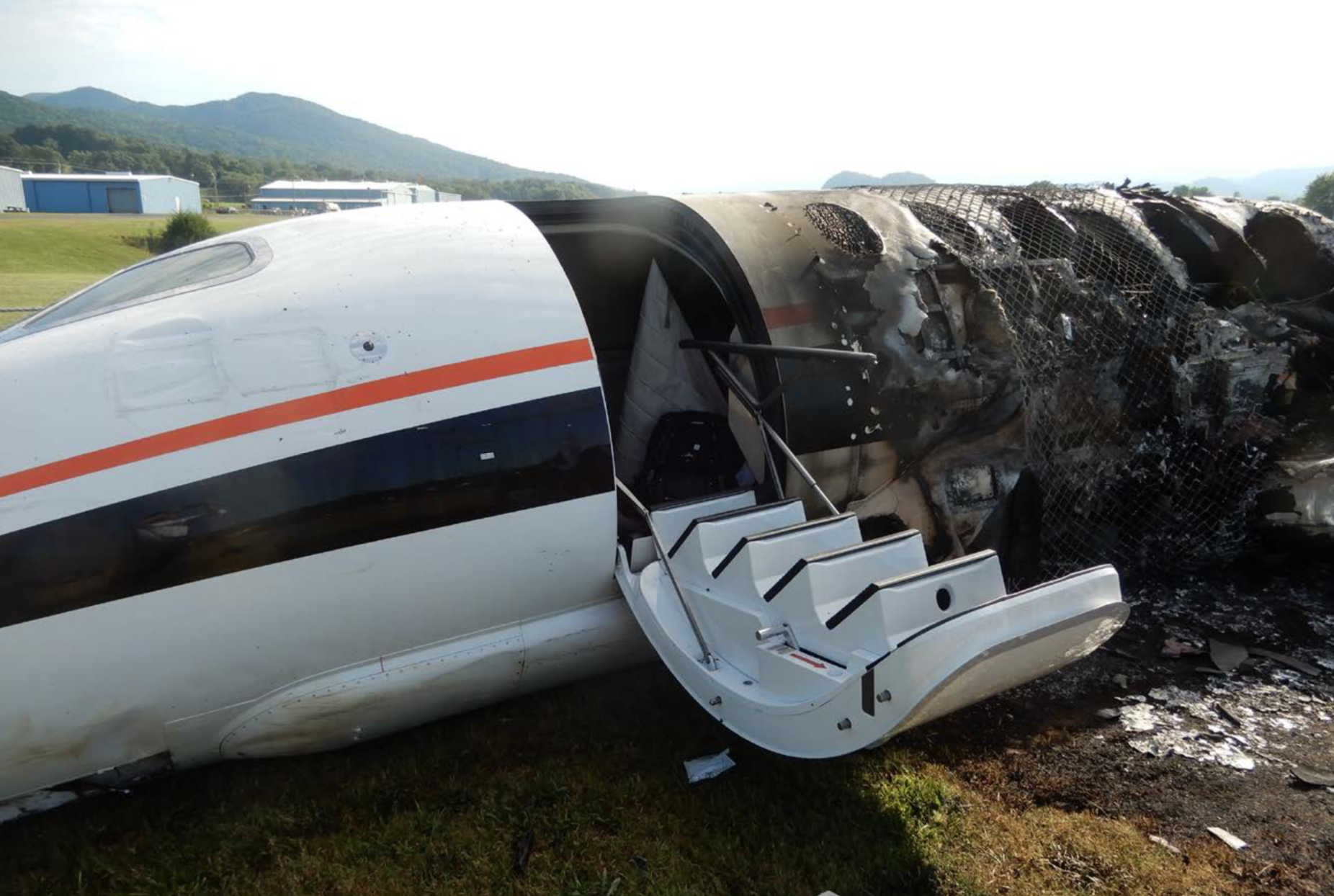

The National Transportation Safety Board released new photos and indicated in investigative documents released Thursday that there were no issues with the engines nor other parts of the Cessna that crashed on landing with Dale Earnhardt Jr., his wife, his daughter and his dog aboard Aug. 15 in Elizabethton, Tenn.
Earnhardt Jr. was holding his 16-month-old daughter when his plane bounced twice on the runway before skidding and eventually catching fire. One of his pilots kicked open the main cabin door enough for everyone to escape and a former member of the U.S. Air Force who witnessed the crash rushed to Earnhardt’s aid when seeing him on the ground.
The NTSB released 256 pages of investigative documents Thursday, which signals it is close to ending its investigation into the fiery crash that caused a minor injury to Earnhardt’s back. It has not set a date for release of a final report and the determination of a probable cause.
Earnhardt was on his way to work the NASCAR Cup Series race weekend at Bristol Motor Speedway, and then the plane was going to head to Texas with the rest of Earnhardt’s family.
The documents indicate that while the final approach was a little fast, the primary issue was the pilots were unable to abort the landing after the second bounce because thrust reversers were already engaged, keeping Earnhardt’s pilots Jeff Milton and Richard Pope from being able to throttle the airplane to get back in the air and land again.

Among the information in the documents released Thursday:
— Pope stated that their approach was “maybe a little fast,” that he was carrying extra speed on the approach because the airplane “slows down so easy.” He indicated that their landing flare – the time between the final approach and first contact with the landing surface where a pilot manages the plane attitude and power settings – was possibly inadequate.

— Milton told NTSB investigators that he “had soul-searched the event many times since the accident and could not explain why the airspeed on final (approach) became high and the approach became unstable.”
— Pope said he normally would wait until the airplane slowed on the ground before deploying the thrust reversers, flaps that open up from the engine bay that help slow down the aircraft. Although he recalled stating in final approach that he would have his hand on the reversers, he may have accidentally deployed them too quickly.

— The crew reported that after the third touchdown, they were both “on the brakes” and the airplane was skidding to the right. It seemed like the right main landing gear had collapsed. They reported that the airplane was skidding and it did not feel as if the airplane was decelerating at all.
— After the second bounce, the NTSB reported the aircraft appeared to climb back up to about 25 feet before it descended rapidly and landed hard on the runway. The right main landing gear collapsed, and the right wing tip contacted the runway. Skid marks from the right main gear and right main gear door indicated the aircraft traveled slightly to the left before it turned back to the right.
The aircraft departed the end of the runway and traveled down a grass covered hill for approximately 400 feet. The aircraft traveled over an approximately 25-foot-wide creek. The left main landing gear and nose gear separated from the aircraft when it struck the opposite creek bank.
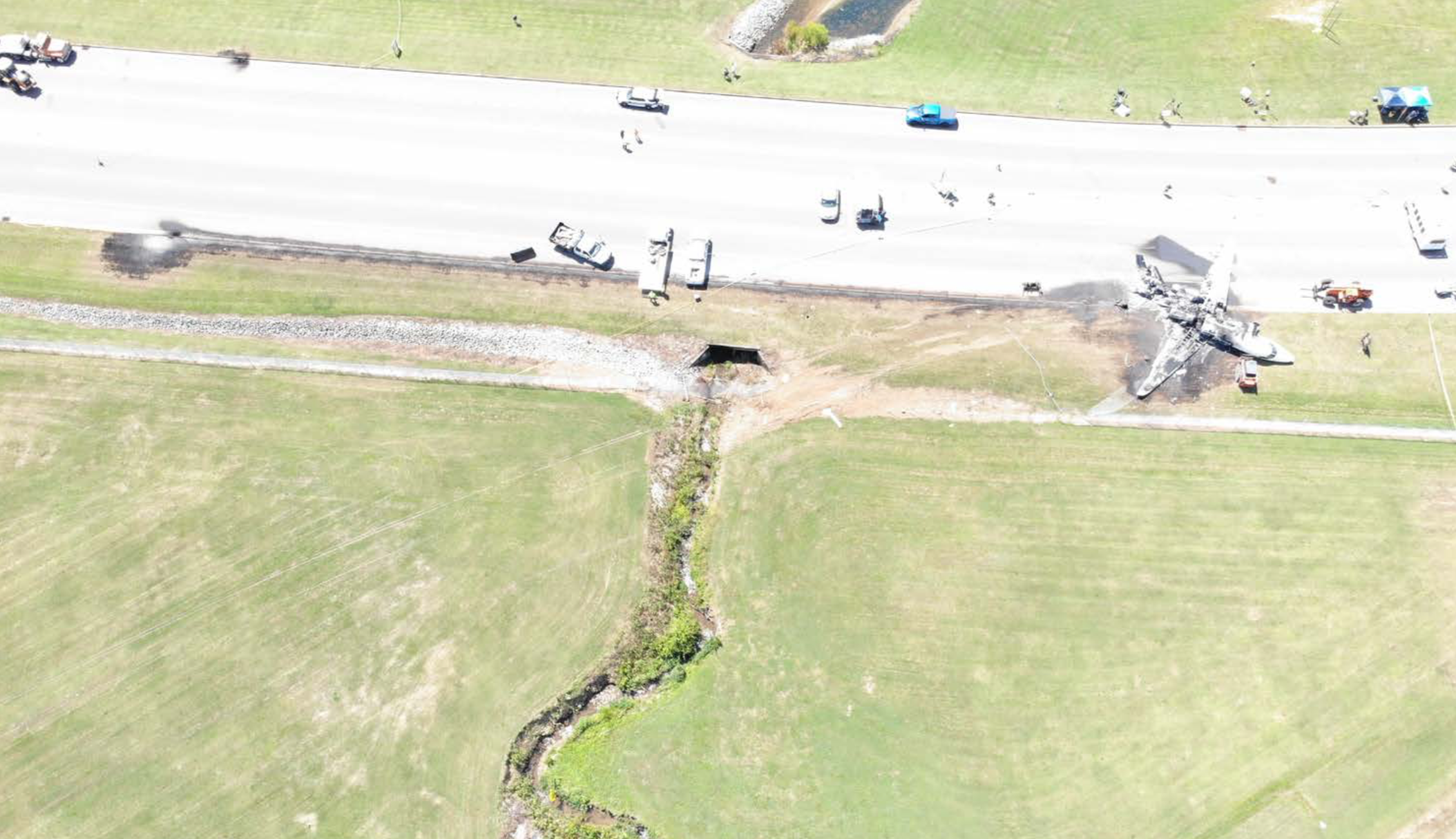
— The flight crew reported that they believed the total evacuation time was about 2-3 minutes. Earnhardt tried to get the over-the-wing emergency exit door open, and Pope was assisting him, but they could not get the door open.
As they were attempting to get the rear exit door open, heavy smoke was coming from the lavatory. Earnhardt then told Melton to try the main cabin door as fire was now visible in the lavatory.
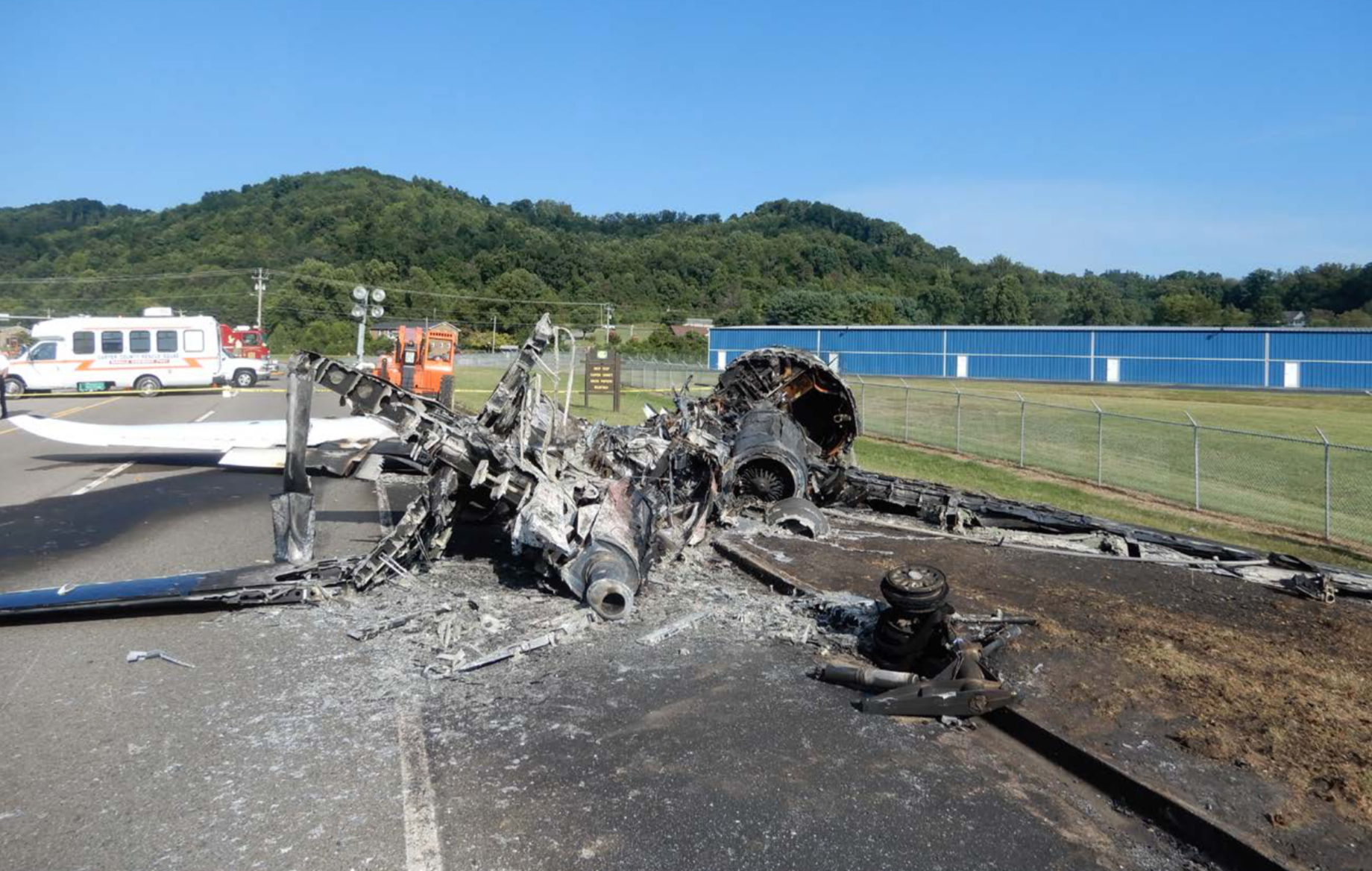
— Melton kicked open the main cabin door — which they weren’t able to get open initially — wide enough so that he could exit.
Earnhardt then handed his daughter, who was in his arms, to the pilot, and then they each squeezed out the opening. He believed the opening was about the size of a conventional oven.
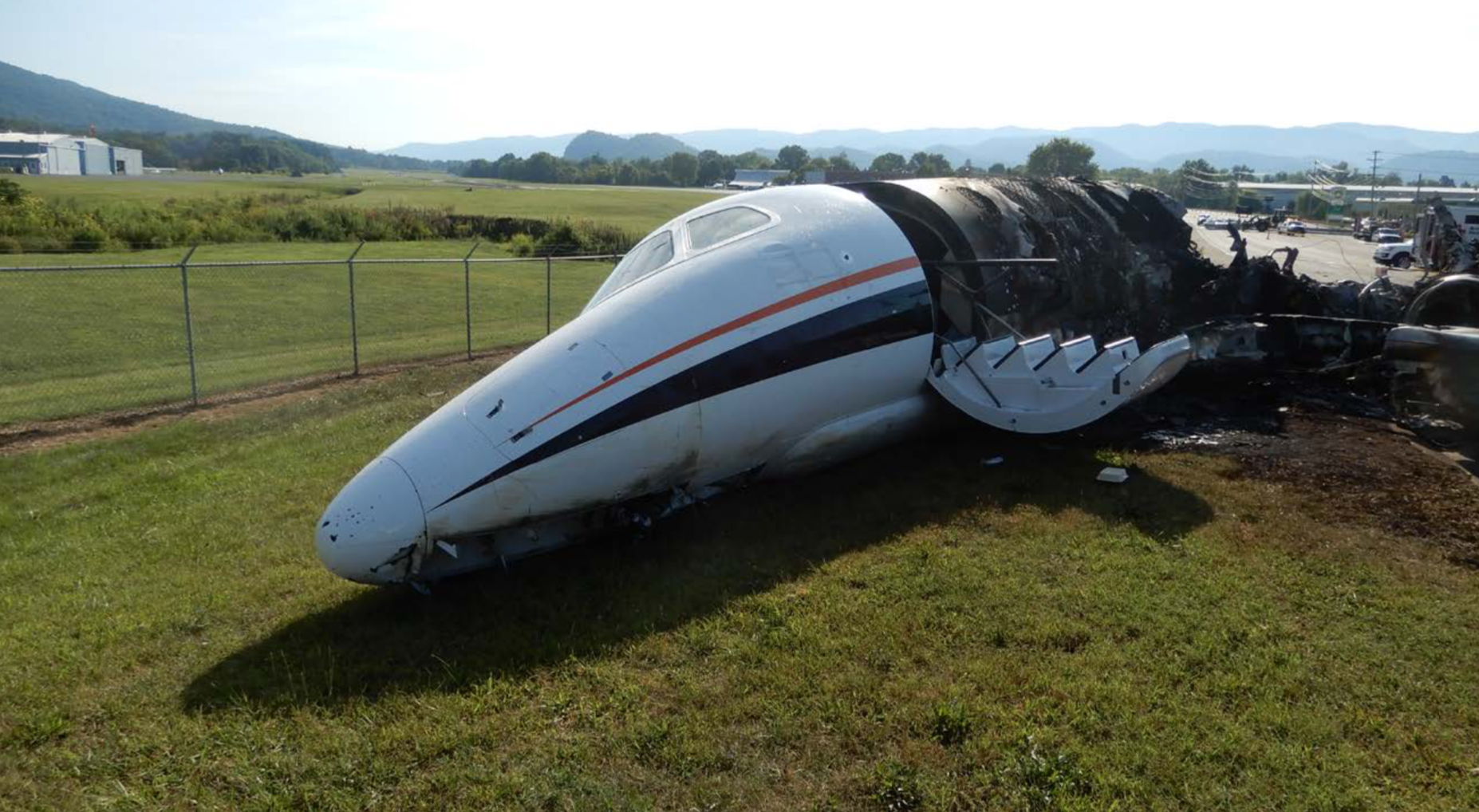
— Cheryl Campbell, who spent 25 years in the Air Force and is trained as a private pilot while also having spent 21 years as a flight attendant for a major airline, saw the accident while driving. Campbell: “As I approached the aircraft, the door opened and two men, a woman and child and a man and dog came out.”
Campbell indicated a man not in a pilot uniform was struggling and he said his back was hurt. Campbell: “He repeatedly asked about his wife and daughter and seemed not to understand or hear, however I assured him each time trying to calm him.”
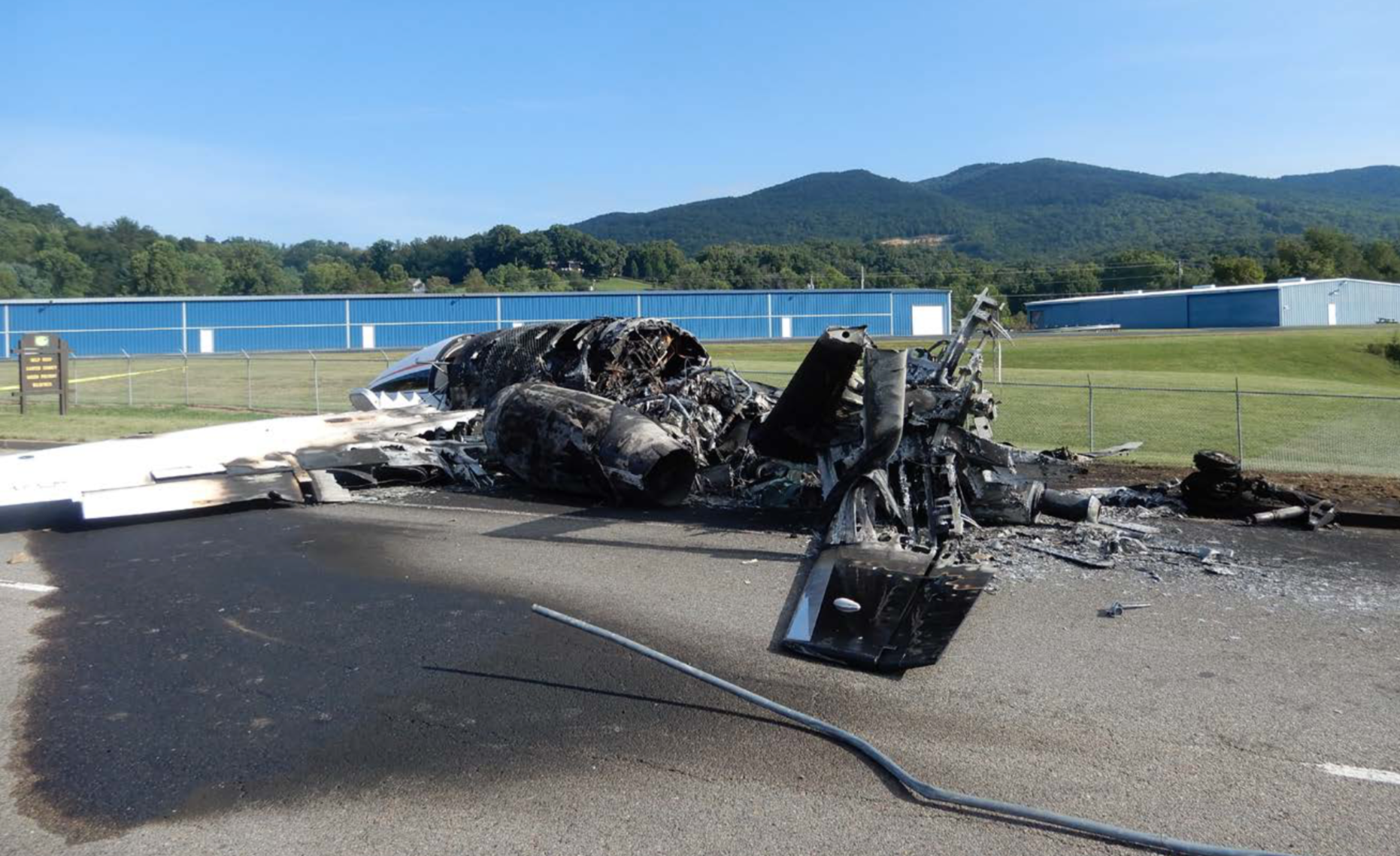
Earnhardt raced two weeks after the accident at Darlington Raceway.
“It was a very tough experience to go through,” Earnhardt said at the time. “I try not to get into that, think about (it happening to my family) too much. Things happen for a reason. You just try to learn from it and move on.
“I love my daughter so much and enjoy being around her and look forward to watching her grow up and experiencing a lot of things with her going forward. That just made you realize that that much more. I’m just thankful and ready to live our lives.”







